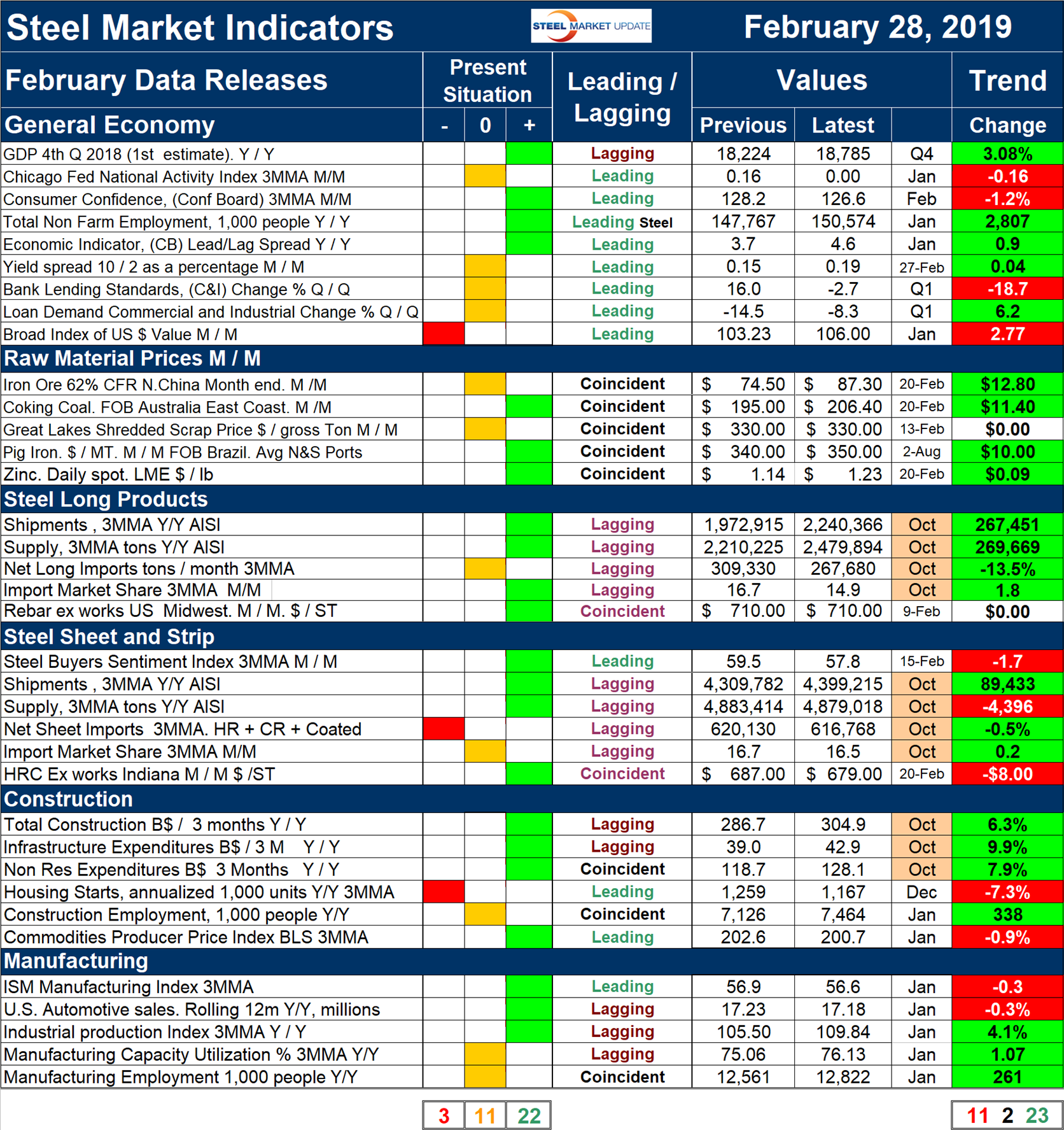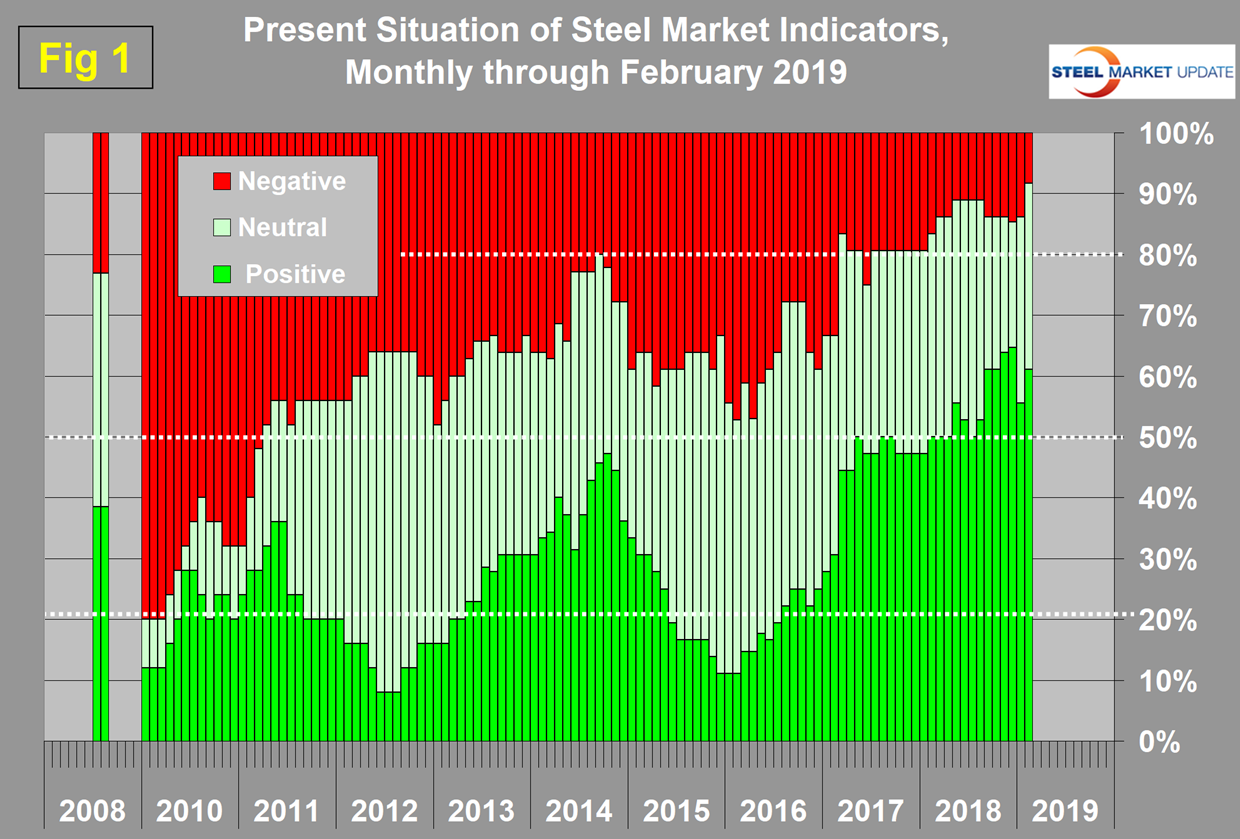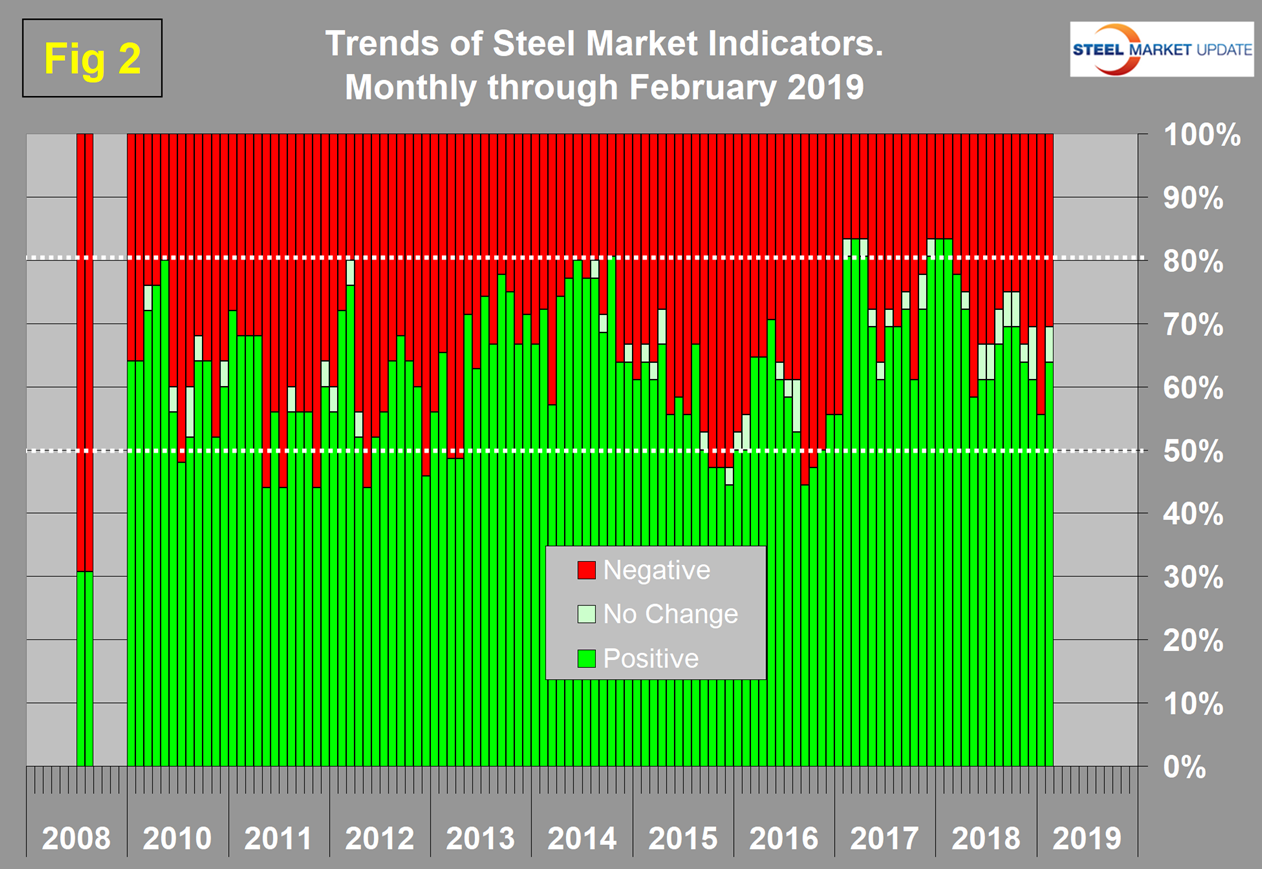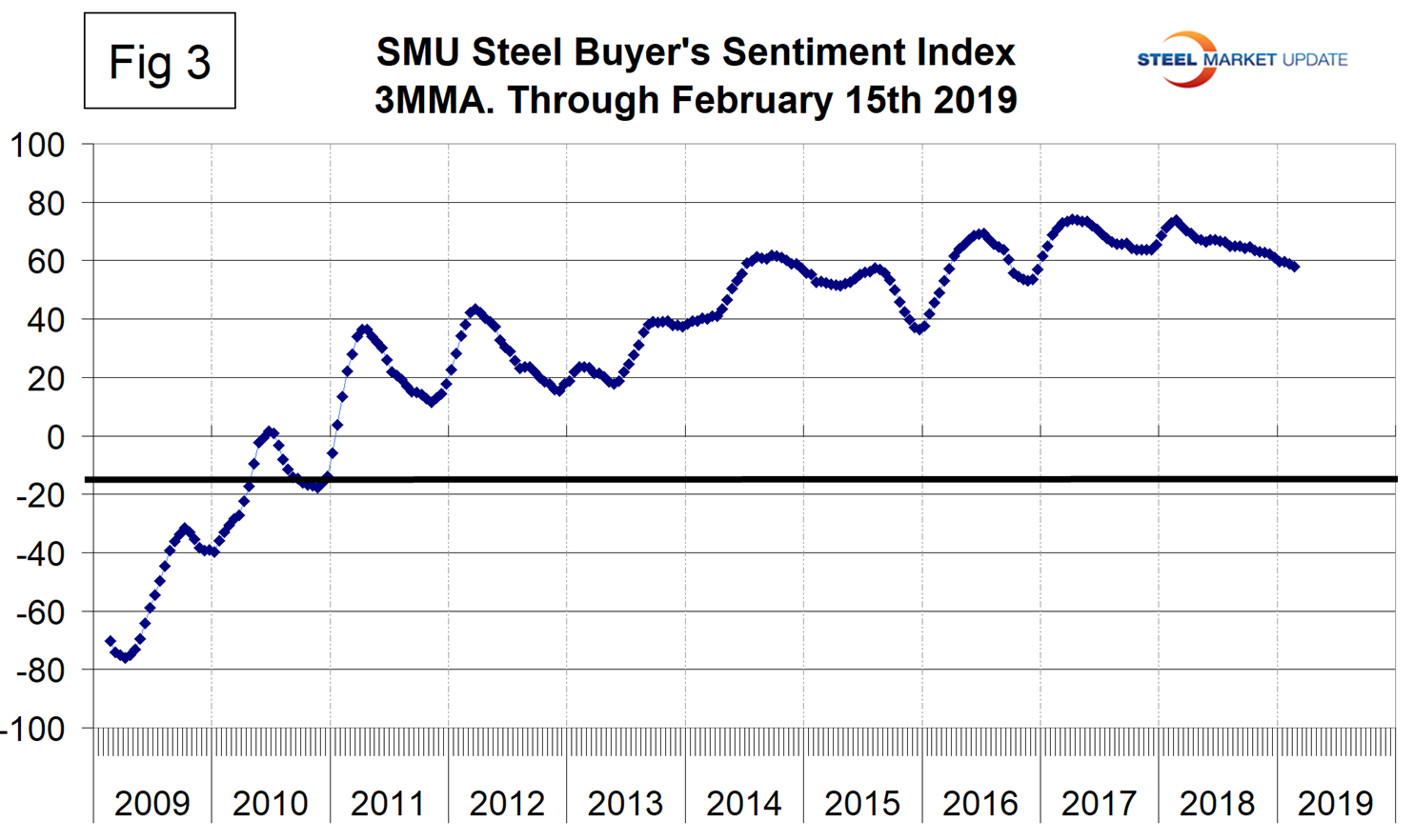Market Data

March 1, 2019
SMU Analysis: Key Market Indicators Strong in February
Written by Peter Wright
Key market indicators were strong in February, but trends have been deteriorating for a year.
This report summarizes 36 data streams that we believe critically describe the state of and provide forward guidance for the steel market. The government statistics departments are gradually catching up after the shutdown, but their revised schedules indicate that it will be the middle of April before all data streams are back on track. In this report of SMU’s 36 key indicators, 11 have no data more current than October. The other 25 are up to date. The missing data includes all the trade, market size and most of the construction results. The resultant incomplete data shows that 22 of the 36 indicators are historically positive with only three negative. The balance is within the band of historically normal. Trends also improved as 23 of the 36 moved positively.
See the end of this piece for an explanation of the Key Indicators concept. This will explain the difference between our view of the present situation, which is subjective, and our analysis of trends, which is based on the latest facts available.
Please refer to Table 1 for our view of the present situation and the quantitative measure of trends. Readers should regard the color codes in the present situation column as a visual summary of the current market condition. The “Trend” columns of Table 1 are also color coded to give a quick visual appreciation of the direction the market is headed. In the date column, (second from the right) the beige shading indicates those data streams that have not been updated. All the other data included in this table was released in February. All results are the latest available as of Feb. 28, 2019.

Present Situation
The sum total number of indicators considered to be positive and historically normal hadn’t changed much in the previous nine months, but in February the number of negatives declined to three, which was the lowest in the history of this analysis. Our intent in using the word normal is to say that this indicator is in the mid-range of historical data. Figure 1 shows our monthly assessment of the present situation since January 2010 on a percentage basis. The number of historically positive indicators was at an all-time high in the history of this analysis in November, but declined in December and January and partially recovered in February. In the general economy section, bank lending standards for commercial and industrial loans tightened and loan demand improved (became less negative). In the raw materials section, the prices of iron ore, coking coal and pig iron improved. In the steel long products and sheet section, there were no changes, but 8 out of 11 data streams are overdue. There were also no changes in the construction or manufacturing sections. All the manufacturing data streams were updated in February, but three of the construction data were not.

Trends
Most values in the trends columns are three-month moving averages (3MMA) to smooth out what can be very erratic monthly data. Trend changes in the individual sectors are described below together with some general comments. (Please note that in most cases this is not February data but data that was released in February for previous months.)
Figure 2 shows the trend of the trends and the pre-recession situation at the far left of the chart. The proportion of trends that are deteriorating fell from 44.4 percent in January to 30.6 percent in February, but in the longer term trends have been deteriorating since February last year when only 16.7 percent were negative.

Our observations about trends in the February data are as follows: In the general economy, the Chicago Fed National Activity Index reversed direction from positive to zero. Through Feb. 27 there was a welcome (slight) improvement in the yield spread, which has been deteriorating since 2015. Bank lending standards for commercial and industrial loans tightened and loan demand became less negative. Five of nine indicators of the general economy are now trending positive and four negative.
In the long products sections, four of the five data streams were not updated. The fifth, the price of rebar in the U.S. Midwest was unchanged. In the sheet steel section, there were no trend reversals, but four of the six data streams were not updated. The buyer’s sentiment index continued the gradual decline that has been ongoing since February last year, but its value is still strong. This index reports on how buyers feel about their company’s opportunity for success in today’s market (Figure 3). The price of hot rolled coil has declined every month since July last year so was not a reversal in February.

There were no trend reversals in the construction section, but three of the six indicators were not updated. There were no trend reversals in the manufacturing section where all indicator streams are current and three of the five are positive.
We believe a continued examination of both the present situation and direction is a valuable tool for corporate business planning. Figures 1 and 2 both show the pre-recession situation in August 2008. The trends analysis shows that the steel market was going over a cliff, but the actual values of the indicators at that time were still good with only 23 percent registering as historically negative.
Explanation: The point of this analysis is to give both a quick visual appreciation of the market situation and a detailed description for those who want to dig deeper. It describes where we are now and the direction the market is headed and is designed to describe the situation on a specific date. The chart is stacked vertically to separate the primary indicators of the general economy, of raw material prices, of both sheet and long product market indicators, and of construction and manufacturing indicators. The indicators are classified as leading, coincident or lagging as shown in the third column.
Columns in the chart are designed to differentiate between where the market is today and the direction it is pointing. Our evaluation of the present situation is subjectively based on our opinion of the historical value of each indicator. There is nothing subjective about the trends section, which provides the latest facts available on the date of publication. It is quite possible for the present situation to be predominantly red and trends to be predominantly green or vice versa depending on the overall situation and direction of the market. The present situation is subdivided into:- below the historical norm (-), (OK), and above the historical norm (+). The “Values” section of the chart is a quantitative definition of the market’s direction. In most cases, values are three-month moving averages to eliminate noise. In cases where seasonality is an issue, the evaluation of market direction is made on a year-over-year comparison to eliminate this effect. Where seasonality is not an issue, concurrent periods are compared. The date of the latest data is identified in the third values column. Values will always be current as of the date of publication. Finally, the far-right column quantifies the trend as a percentage or numerical change with color code classification to indicate positive or negative direction.







